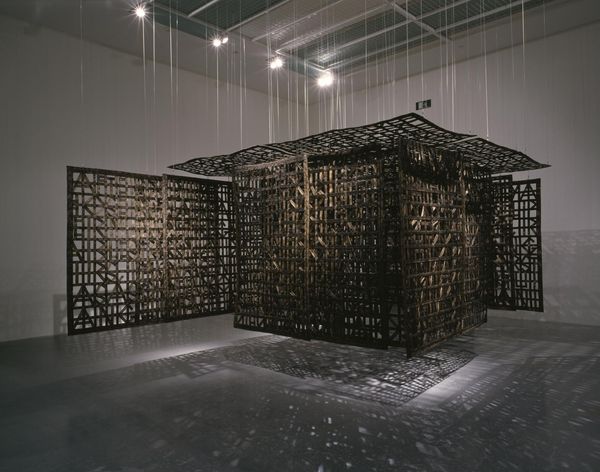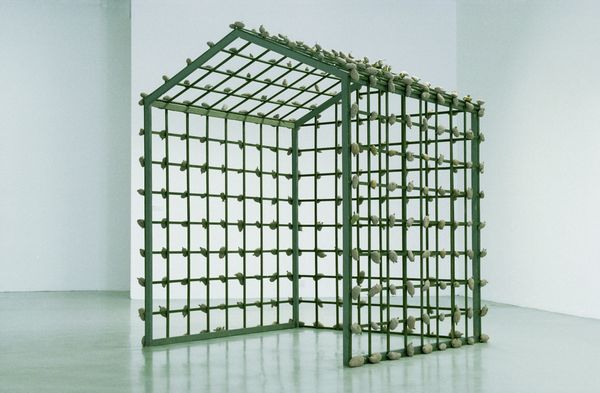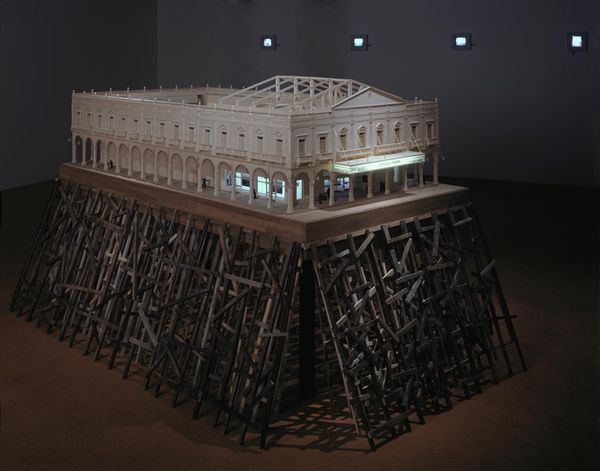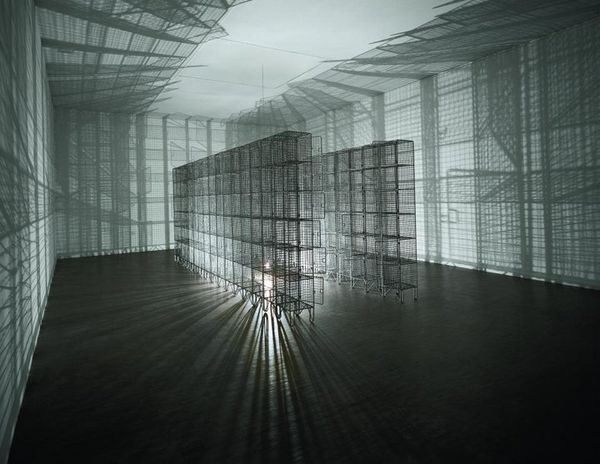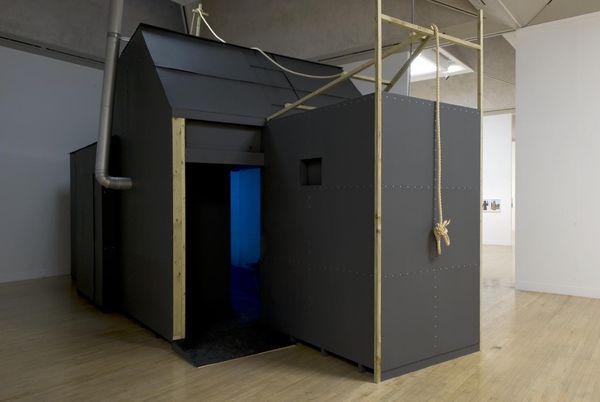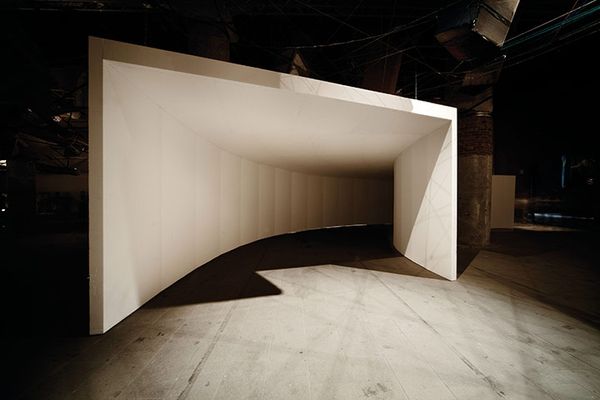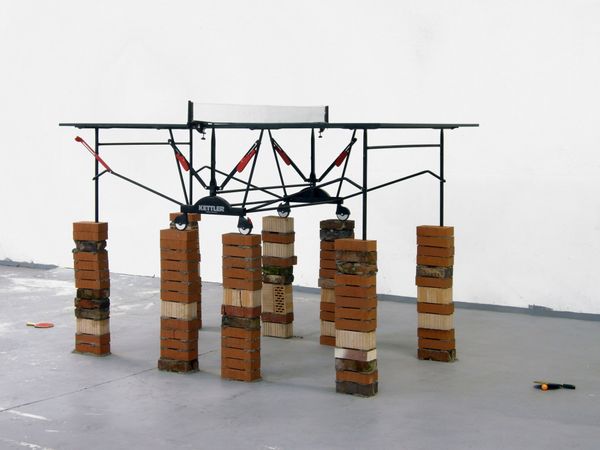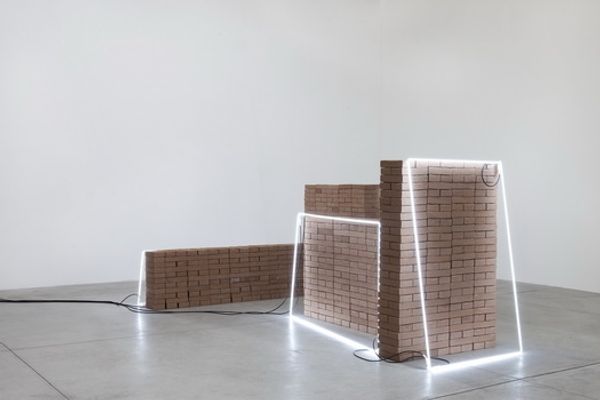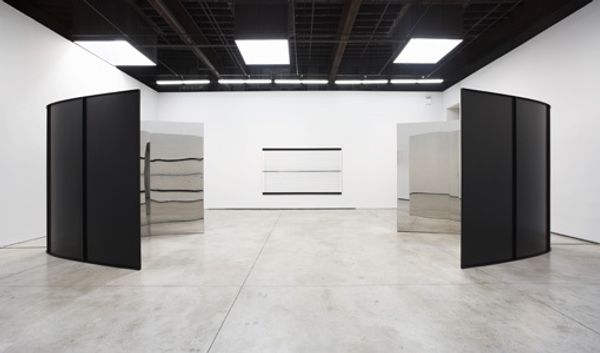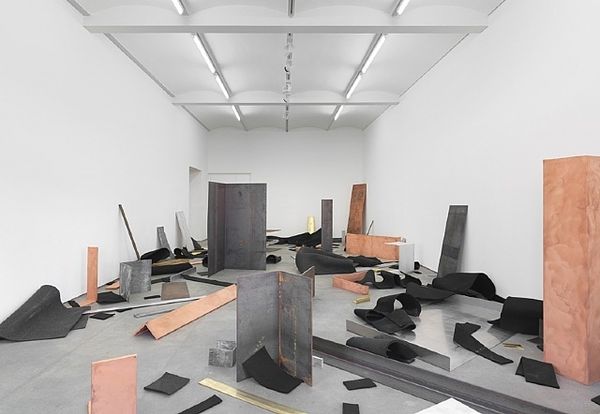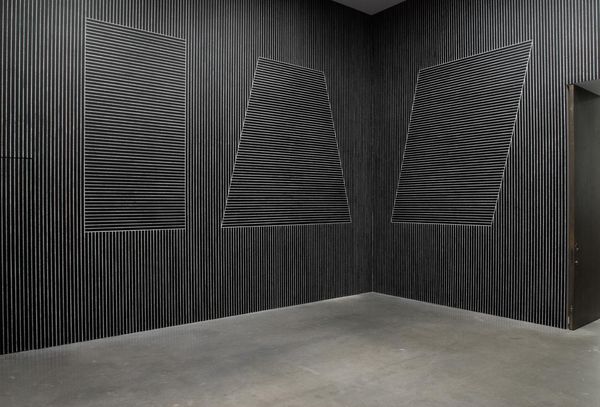
Dimensions: object, each: 1830 x 1200 x 15 mm displayed: 2400 x 3300 x 4700 mm
Copyright: © Cristina Iglesias | CC-BY-NC-ND 4.0 DEED, Photo: Tate
Editor: This is Cristina Iglesias' "Pavilion Suspended in a Room I," currently housed at the Tate. I'm struck by how the gridded structure contrasts with the implied weightlessness of the suspended form. What are your initial thoughts on its composition? Curator: The piece is an exploration of form and space. Note how the geometric rigor of the latticework clashes with the almost organic undulation of the suspended planes. Iglesias masterfully creates tension through this interplay. What effect does the dark color have on your experience of the work? Editor: It emphasizes the shadows and makes it feel more enclosed, almost claustrophobic, despite the open grid. I guess I didn't expect it to feel so imposing. Curator: Precisely. The materiality and form work in concert to create an unsettling spatial dynamic. The sculpture challenges our perception of architectural space and its inherent limitations. Editor: I never considered how much the interplay between the grid and its suspension could impact the overall experience. It's more complex than it initially seemed. Curator: Indeed, the power lies in the nuanced interplay of these formal elements.
Comments
tate 6 months ago
⋮
http://www.tate.org.uk/art/artworks/iglesias-pavilion-suspended-in-a-room-i-t12135
Join the conversation
Join millions of artists and users on Artera today and experience the ultimate creative platform.
tate 6 months ago
⋮
Viewers are invited to enter and explore this open-ended space, defined by a sequence of latticework panels. The filigree screens, and their atmospheric shadows highlight the opposites of mass and weightlessness, enclosure and openness, light and dark. The decorative designs seem to evoke Moorish abstract art but, on closer inspection, letters and words can be discerned. These comprise an extract from Arthur C. Clarke’s science-fiction novel Rendezvous with Rama (1973) which describes the discovery of a vast spacecraft that contains an extraordinary architectural landscape. Gallery label, October 2018
